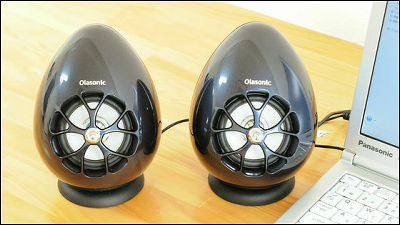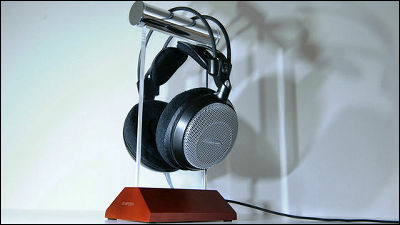The repo tried to improve the sound quality by exchanging the SONY professional headphone cable

Professional monitor headphones that continue to collect thick trust from professional musicians and sound engineers for 25 years since its launch in 1989, that's what SONYMDR-CD 900STis. It is not an exaggeration to say that the sound quality which was developed focusing on precisely reproducing the original sound without applying unnecessary seasoning to the sound quality is a special part that the item handling is limited to the musical instrument shop You can see a glimpse of its characteristics even if you look at sales channel settings.
MDR-CD 900ST
http://www.smci.jp/headphones/cd900st/
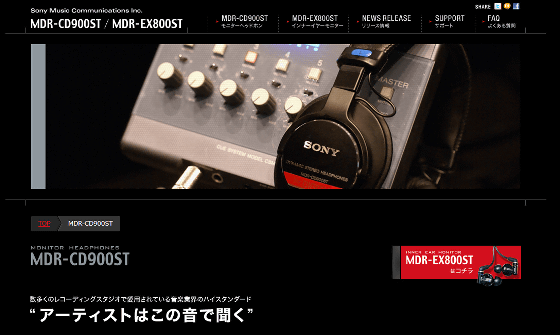
Although it is such MDR-CD 900ST, it is also a matter of complaint from the musician and engineer stuck to the sound. Although the balance of the sound quality in the vertical direction extending from the bass to the treble is satisfactory, although the sound image at the time of playing music concentrates at the center of the head and the spread of the sound in the left and right direction (stereo feeling) is lacking, It is said that this is caused by cable that is adopted as genuine.
In principle, two cables of "+" pole and "-" pole (hereinafter "ground") are required to send the speech signal, and when transmitting the left and right signals it consists of four cables "4-core cable" is supposed to be essential. However, since there is a characteristic that the cable on the ground side can be shared on the left and right, one is omitted and "three-core cable" is often used.
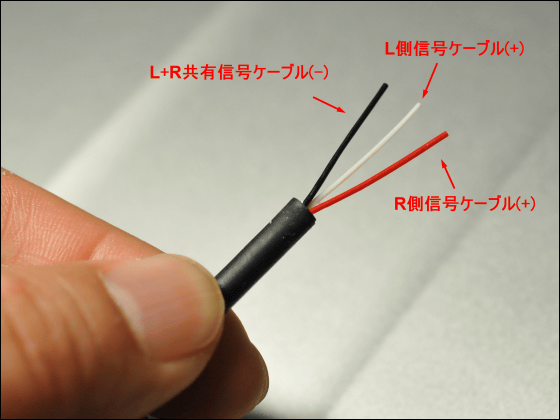
I can not miss an example of many commercially available headphones, and MDR-CD 900ST also uses a 3-core cable for genuine. By sharing the cable on the ground side, the left and right audio signals mix together "Crosstalk"Occurred and the voice that said that a certain kind of" turbidity "occurs in left and right sound quality and stereo feeling is impaired has been raised from before. At the same time, at the same time, the voice saying "It will improve the sound quality and sound spread by replacing it with a 4-conductor cable" has been raised, so some users will need to change the cable to replace the cable It came to be caught.
I tried to check the difference in sound quality by exchanging cables actually using MDR-CD 900ST which I was using from, how much such cable exchange will bring about change.
◆ Selection of cable
In general, cables are said to have never been over thicker than thin. That is why it is because the too thin cable becomes the resistance of the electric signal, but there is a limit to making it thick as well. Especially in the case of MDR - CD 900 ST, there is a limitation that the diameter of the hole to draw the cable into the main body is only about 5 mm, so if you apply the condition that the diameter is 5 mm or less with the 4 core cable, the choice is Swiss cable manufacturerGotham AudioIt is almost limited to the company's cable "GAC - 4/1". Several companies handle it in Japan, but decided to purchase from GIZMO-MUSIC, which is selling by the length by mail order.
Gotham Audio cable | GAC-4/1 mini cable sale
http://www.gizmo-music.com/?pid=51242397
The interior of the cable looks like this. In addition to the four cables of red, white, yellow and pink, it is characterized by shields (2 and 3 in the figure) to prevent noise by this thinness. (However, it is not used in this remodeling)

I got the cable, so I will start swapping with genuine products.
In addition, since commercially available products are tone quality tuned by manufacturers, including cables used, this remodeling is not necessarily a sound quality improvement. It is a remodeling done by a person who felt dissatisfied with the current situation, so it is necessary to be aware that it does not reflect the intention of the manufacturer.
◆ Cable replacement
First, remove the earpad of the headphone body. Especially tools are not necessary, just by pulling the end part by hand, it will come off.

When I remove the ear pad, it looks like this. A urethane ring is glued around the silver-colored driver unit (speaker), but I decided to replace it with a new one because it was tattered.

Remove the four screws and remove the board that is installing the driver unit.

It was easy to remove. Such good maintainability is also a unique characteristic of equipment used at professional sites.

Terminals for soldering are exposed on the back of the driver unit.

Pushing in four claws ...

The part on the ring which fixed the driver unit has come off.

Before after-ureth of the urethane ring affixed to the fixing ring. The left used has been used, the right is the new item procured for replacement. Just using it for about 3 years, I was totally bitten.

Place the urethane ring upside down on the desk and press the unit mounting parts from above to paste. Otherwise, the urethane is too soft for it to stick well.

Installation complete. It is a very different appearance from the previous use.

Enter the cable exchange. First of all, using a soldering iron, remove all genuine cables.

Removal completed. Remove all old solder with suction wire.

Since the driver unit is magnetized, if you are not careful, screws may get in and you may damage the unit.

The cable that came into the case of the headphone is wound once inside, and it prevents falling off when it is pulled strongly.
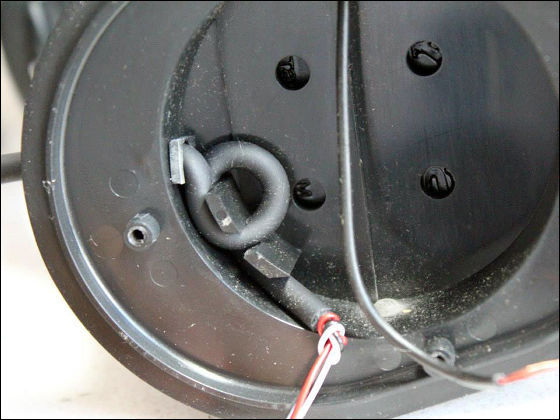
The inside of the case was packed with a sound absorbing material like a very light sponge.
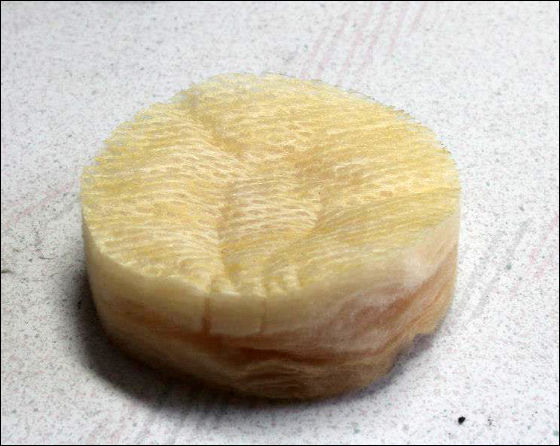
We will solder the 4-core cable. Because it is a hard cable rather than a genuine cable, it is difficult to walk around.
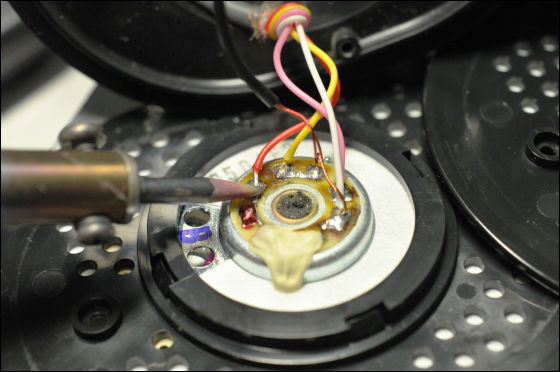
In this case, it is necessary to process the board part of the unit only in one place. Two terminals connected by a thin bridge are cut off by a cutter or the like and divided. By doing this, the ground cable connected to the R side will not mix with the L side.
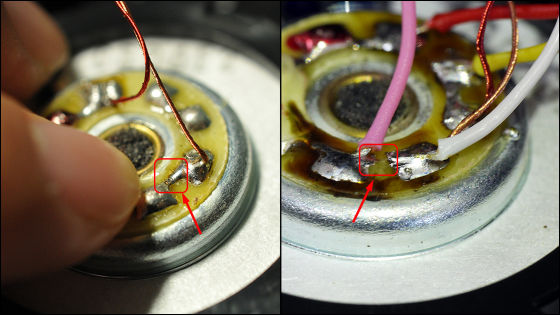
I wound the cable for preventing falling off like the former, but because the film is hard, I got a little trouble.
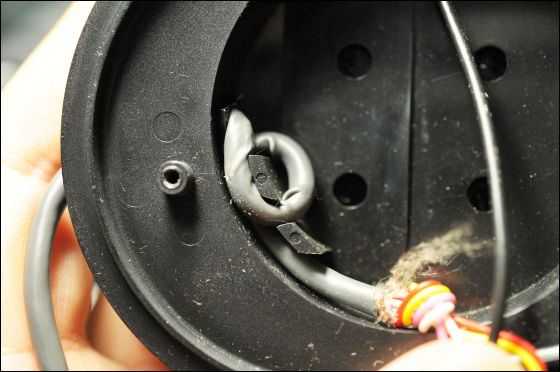
Cable soldering is completed. This separates the left and right signals after the plug.
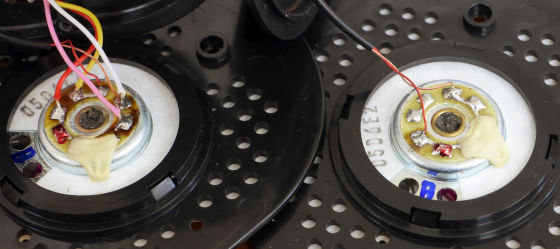
The wiring situation on the L side unit looks like this. (1) in the figure is the ground connected to the L side. (2) is the ground connected to the R side, but it is connected to the cable (3) connected to the R side on the unit and relayed by solder. It is in a state soldered on the L side unit, but since it is insulated from the unit, the left and right signals are in a separated state.

The plug side also needs to be processed. The yellow cable is on the R side and the red cable is on the L side. This time I tried to convert it to 3.5mm mini plug which is easy to use for playing iPod etc etc.
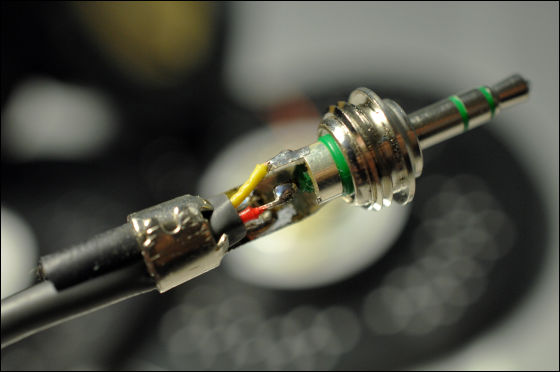
Two white and pink cables which are the ground of both channels are soldered together.
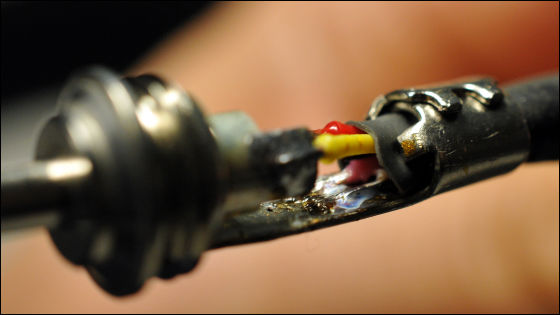
Once soldering is completed, we will assemble it in its original state.

The new urethane ring is so thick.
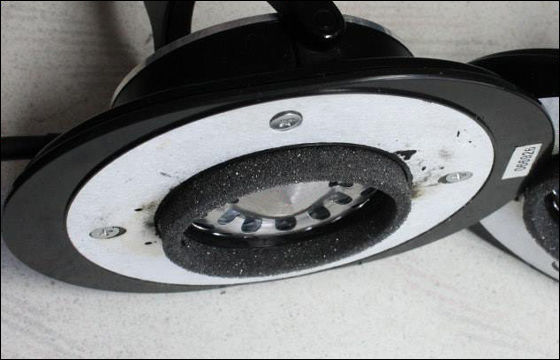
Install the ear pad. While pulling slightly strongly, I will fit in the groove of the case.

The work is completed. The red sticker stuck with "for DIGITAL", which can be said as a symbol of MDR-CD 900ST, has been peeled off a long time ago.
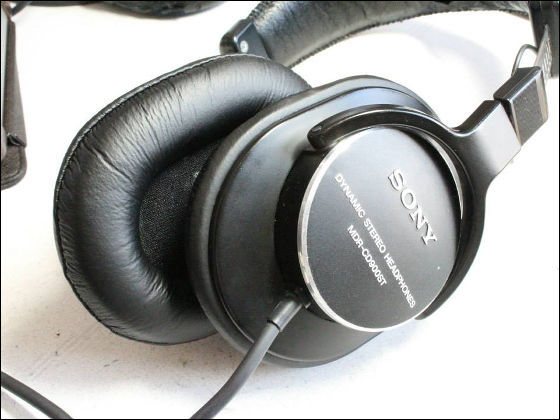
The state of the net being pushed slightly by the thickness of the urethane pad. This is the form of a correct answer.

I tried listening ◆
It is a sound check using the source that we are using as a reference. The first impression was "Is that what? Power is gone?" Although the original MDR-CD 900ST seems to have led to a feeling of power like a lump of sound conversely because the sound image is closer to the center, it is localized at the center of the head, between the eyebrows It seems that it led to the impression that it was unsatisfactory because energy sense was dispersed to the left and right.
However, as the ears get used to it gradually, a sound image spreading wider than before, and a feeling of energy spreading well in balance are felt comfortably. It was also a feature of MDR-CD900ST that the power feeling "guts" sounded at the center of the head, but in a different sense from that, a sound image closer to flat is reproduced in a more true sense. Sounds that are closer to the right are unlimitedly right and the opposite left also improves the separation of the sound of each instrument and the sound is "visible" in the head. Is this the merit of crosstalk mitigation?
Moreover, although it felt as though the power feeling became thin at the beginning, it seems that the bass became richer than before when the ear accustomed. Before the remodeling, the sound image which had become rough in the center was dispersed to the left and right, space was born, and the sound localization at the center part was clearer. Because the space is born and the sound energy is not saturated, it feels that the body feeling of the kick drum and the ringing of the bass are more accurately reproduced.
As a conclusion, it was a customization that felt enough effect. It is true that the original MDR-CD900ST-like feature faded, but there is a growing sense that the wide field of sound, the goodness of up and down and left and right balance, the feeling of being able to see each one of the instruments if you close your eyes , Some people may feel like this can be accurately monitored. Changes due to cable change can be expected for any type of machine as long as the original 3-core cable model, so it may be good to try people interested.
Related Posts:



